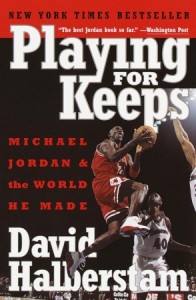With the constantly-expanding world of brand-spankin’-new innovations, the internet has created new platforms for journalists all over the world to express their voice and opinion on anything they please. For example, with the explosion of sports networks (“ESPN, ESPN2, ESPNU, CBS College Sports, the Big Ten Network”), there are specific jobs within each network for sports communication professionals. And as print news is dying out, this is a major boost for all of us journalists out there.
“In 1995, only 15% of adults in the US used the Internet (Mills, 2010). Pew Research has found that in 2009, 74% of this same group used the Internet.”
So many resources contribute to this growing statistic, like our PC’s, laptops and now our smart phones. Of course nothing regarding new technologies could be talked about without mentioning Facebook and Twitter! These two resources have allowed the fans to bypass sports writers for information, as you can see everything that’s on your favorite athlete’s mind straight from his mouth! (or at least straight from his hands that are typing his updated status!)
One thing mentioned in the chapter that caught my attention as being quite interesting was that Kevin Love, the current star forward on the NBA’s Minnesota Timberwolves, had tweeted to his followers that his coach, Kevin McHale had been fired. But this news had not been announced by the organization yet. While, there clearly are some things that need to be fixed regarding the way athletes make statements that may not be accurate, their relationships with Twitter still offer so much in the world of online sports news.
“Shaq’s tweets have become popular and as of February 2010 he had more than 2.8 million followers on Twitter.”
NBA player Twitter info is linked to the NBA.com website so fans can see some of the best NBA “Tweeters” and follow them from the league’s website.
With the introduction of cell phones as being an integral part of interactivity within the sports world, readers are able to connect with their favorite sports writers easily and feel — you guess it — interactive! People can call in talk shows to speak with the host and the host can also send e-mails or text messages to people to set up an interview, meeting, etc.
“Camera technology has also enhanced the viewing experience.”
Networks have placed cameras in places all over the arena’s to create a better experience for its viewers. They make you feel as if you are in the action rather just a spectator watching. Also, 3D TV and HD TV are creating a much more expanding technology industry to keep fans feeling like a part of the action. For example, ” the 2010 NCAA men’s basketball Final Four was broadcast not only in high definition (HD) but also in 3D.” The expanding movement has created more room for networks to be offered by satellite, telcos, and cable operators.
“The NCAA men’s basketball championship has been streamed online in a partnership with CBS and the NCAA since 2003.”
Something that I have been into for a while now and that was talked about in this chapter was the new development in “streaming video.” I am an avid user of ESPN360, ESPN’s streaming coverage of live games in all different of sports. This makes it so much easier for the fans, who do not get games in their local area, to watch games from around the world live on their computers. It really is amazing!
Dan Steinberg, a blogger for the Washington Post, uses Twitter to get lots of information across to his followers regarding Washington, D.C. pro sports teams, including an occasional podcast about the Washington Redskins. How important is Twitter even for journalists in today’s society? Check out what Steinberg said in the chapter about one of the Twitter apps he uses:
“I have a Twitter app called “UberTwitter” that refreshes my Twitter feed every 10 minutes. I receive updates of any new Tweets from those fellow Twitterers that I follow.”
There you have it! Even the journalists themselves need to use these new and emerging technologies to stay updated on everything happening in today’s world! Things are changing so quickly that an hourly update isn’t even enough to stay connected with the news. It’s a minute-by-minute thing!
Another thing that was really interesting was his answer to a question about how the use of Twitter led to a story on his blog:
“One great example occurred during a preseason game. Ladell Betts went out on the field with a jersey that spelled his name “Bettis” like the retired running back from the Pittsburgh Steelers. I was at the game in the press box and wanted to have one of the Washington Post photographers take a picture of his jersey for my blog. I could not reach the photographer, so I tweeted all of my followers on Twitter and asked someone to take a picture of the jersey and send the picture to me. I received about 20 tweets and many of the pictures were surprisingly good.”
So, thanks to the continuing new media in today’s world for keeping us up to speed as the print news dies day-by-day. The world is evolving and so are the many ways to receive news. Improving communication skills is the only way to be certain that you can make it as a journalist nowadays. Engage your readers and “retain your audience” to ensure the wellbeing of your journalism self. But one question still remains: Will Twitter, Facebook and blogs be able to produce stories with the same abilities of those in newspapers and magazines? Only time will tell.
